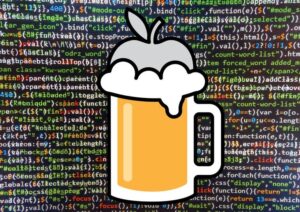Steps taken by one company with 40,000 employees worldwide can offer insights for other enterprises trying to get their operations back up to speed following shutdowns.
Since the COVID-19 coronavirus first appeared in China in December, things have been turned upside down at data storage vendor Seagate Technology. With 40,000 employees around the world in seven factories and in related facilities, big changes arrived regularly as the company maneuvered to stay ahead of the challenges of the still-spreading pandemic.
And now, as the lingering coronavirus appears to be defining a new normal into the future across the globe, Seagate is working hard to figure out how to best adjust, plan, and strategize to meet those new requirements as it gets its own people back to work.
“Things have really been changing in the last three months,” said Ravi Naik, Seagate’s CIO. “We’ve gone away from having long-term windows for maintenance and doing upgrades at set intervals. Now it’s in real time. It’s happening as we speak.”
That meant daily update meetings between company leaders about tools, technologies, support issues, and more just to monitor it all. As the pandemic has spread, the company has transformed to keep up and is now using new mechanisms to run its operations.
SEE: COVID-19: A guide and checklist for restarting your business (TechRepublic Premium)
“There was a change in not only the technology, but in the processes and the philosophy of managing a technology ecosystem,” said Naik. And as the company plans its recovery from the coronavirus, those on-the-fly changes will help it formulate its strategies for eventually reopening offices and getting back to its new normal after pandemic.
To do that, Seagate has adopted five critical strategies to help it approach the return to work of many of its employees as the world learns to cope with the pandemic in the months to come, said Naik.
Strategy No. 1
The first step was to accelerate a partnership it began with Microsoft in January to deploy the Microsoft 365 office productivity suite to some 25,000 Seagate employees to allow them to work remotely during the crisis. The workers previously had been using the Google G Suite, but the decision to switch to Microsoft 365 was made before the pandemic began.
“This suite of collaboration tools is helping us not only during the crisis but the post-crisis environment is very important,” Naik said. “It’s going to be a slow comeback to normalcy and as we get into that, the collaboration tools will continue to improve and will be leveraged.”
One example of that is an evaluation of Microsoft HoloLens for virtual factory tours. “We have suppliers who need to come onto our factory floors and to do audits on an annual basis,” said Naik. “So, as we move from the quarantine and remote work model, we are now putting in place solutions and capabilities that will allow us to bring features online which will allow a ramped comeback.”
A lesson learned from the pandemic so far is that while such crises can typically slow such projects down, this one was sped up when project leaders determined it could help with the company’s recovery, he said.
Strategy No. 2
Also recently implemented is a mobile device-enhanced health tracking system designed to watch over employees as they eventually return to their workplaces.
“When we come back, we come back to a very different world,” said Naik. “This is going to be a world of social-distancing at work. We will not throw a switch and magically things will be back to normal.”
To protect the health and safety of workers, the mobile device health tracking system includes body temperature scanning, several brief health questions that must be answered by an employee before they are allowed to enter a facility, and contact tracing details to help control the spread of the coronavirus. “All of these capabilities on a site, on a global basis, where we have 40,000 employees, can be pretty complex and challenging,” said Naik. “So, we have instituted solutions to help.”
The system includes an iPad, a thermal camera, special software and an employee identity badging component.
Strategy No. 3
Another strategy being implemented by Seagate is a broad effort to keep its factories functioning around the globe, including staggered work shifts, and other steps.
“It is critical for us to keep these factories running to meet the demand from our customers and to keep our business operational,” said Naik. “Factories require people. We have been successful in doing data mining to determine the absolutely critical human resources that are required on our factory floor, then separating them and putting in processes and work models that allows for safety while having these individuals be at work.”
With that done, nonessential, non-factory workers can be removed from work environments and set up to work from home where they can be safe and continue to do their jobs, he said.
Strategy No. 4
Also critical is using data to help Seagate’s supply chain remain intact and healthy even as COVID-19 disruptions continue, he said.
“There have been significant disruptions to the supply chain globally and it’s through management of data and analysis that we are able to somewhat minimize the impact of these disruptions,” he said. “For example, transportation routes, freight management, challenges with component supplies and product demand shifts are all critical challenges that global supply chains are facing. So, planning for that, getting ahead of that and ensuring we are making investments and priority changes based on this is important.”
Strategy No. 5
Lastly, Seagate has also been focusing sharply on keeping its critical infrastructure up and functioning in what is shaping up to be the new normal.
In the past, monitoring networking and collaboration technologies meant watching them for bandwidth issues, said Naik. But under the pandemic, as workers move more to the fringe or to the edge, their data networking requirements and the data flow models change dramatically. That is seen when many workers are trying to access resources at the same time around the world. The latencies and bandwidth constraints experienced by workers using their home networks becomes a constraining factor.
“We had to change the way we were architecting our data flows and the bandwidth off our networks” to cope with the demands, he said. “We actually re-plumb our network globally to accommodate for the needs. And I believe that model will stay in the post-COVID world.”
Before the pandemic, Seagate had many workers onsite within its data centers to manage network gear and perform other tasks. But that has largely changed as well. “We’ve moved to not only a remote and more distributed model where monitoring hands-free support of equipment has become critical and will continue to be critical,” said Naik.
Each of these strategies and steps taken by Seagate can be useful for a wide range of companies to review and implement as they get their operations back up to speed following shut-downs.
“What this crisis has shown us is that there are a number of functions that can actually operate very effectively from a remote point of view,” he said. “And as we look at coming back to work, there definitely are going to be discussions and decisions being made where there will be only those functions which are critical to be onsite, to be brought on-premises. That allows us to have a staggered work shift and also allows there to be significant social-distancing in between our employees. So when we say that we will have a slow ramp comeback, it will be managed by organization, by need, and by criticality of being onsite.”
After months of daily enterprise crisis team phone meetings to track the company’s status globally, the meetings are now moving to twice a week as some issues have stabilized for now, said Naik. What comes next is unknown, he added.
“It all depends upon what is the new COVID-19 phase tomorrow, whether there is vaccine, whether there is a solution,” he said. “It is really a very fluid situation and what we’re doing is we are geared to respond to the terms that this situation presents us. The most important asset we have is our people and we’re thankful to our people for staying focused, doing the tough job in a tough situation and not dropping the ball. We have fundamentally changed the way we approach it.”
Also see
” data-credit=”Image: Seagate” rel=”noopener noreferrer nofollow”>

A Seagate employee at work.
Image: Seagate
Source of Article




